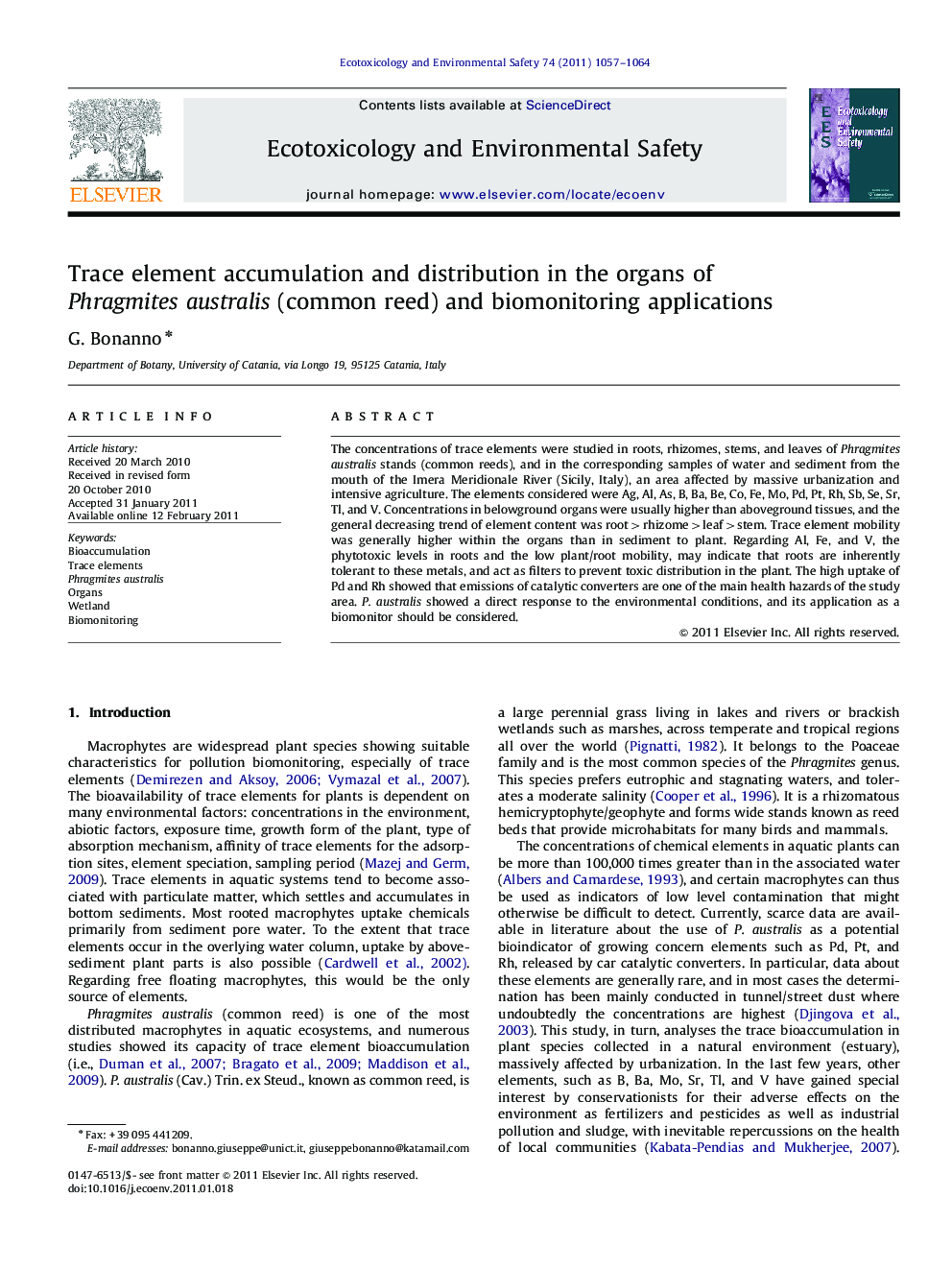| Article ID | Journal | Published Year | Pages | File Type |
|---|---|---|---|---|
| 4421496 | Ecotoxicology and Environmental Safety | 2011 | 8 Pages |
The concentrations of trace elements were studied in roots, rhizomes, stems, and leaves of Phragmites australis stands (common reeds), and in the corresponding samples of water and sediment from the mouth of the Imera Meridionale River (Sicily, Italy), an area affected by massive urbanization and intensive agriculture. The elements considered were Ag, Al, As, B, Ba, Be, Co, Fe, Mo, Pd, Pt, Rh, Sb, Se, Sr, Tl, and V. Concentrations in belowground organs were usually higher than aboveground tissues, and the general decreasing trend of element content was root>rhizome>leaf>stem. Trace element mobility was generally higher within the organs than in sediment to plant. Regarding Al, Fe, and V, the phytotoxic levels in roots and the low plant/root mobility, may indicate that roots are inherently tolerant to these metals, and act as filters to prevent toxic distribution in the plant. The high uptake of Pd and Rh showed that emissions of catalytic converters are one of the main health hazards of the study area. P. australis showed a direct response to the environmental conditions, and its application as a biomonitor should be considered.
